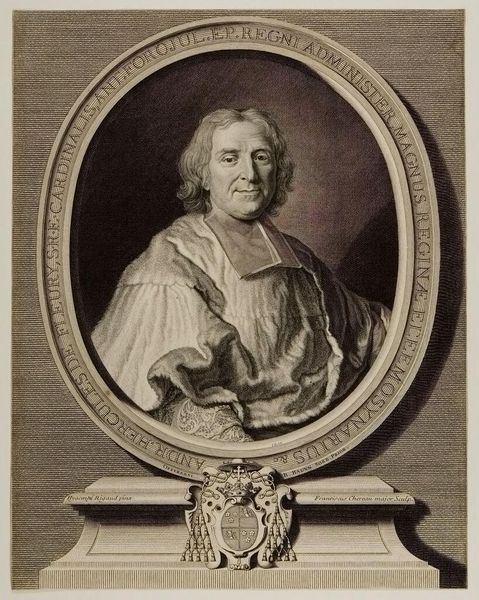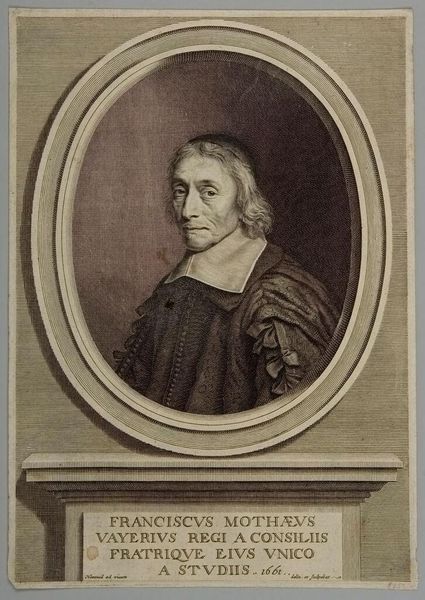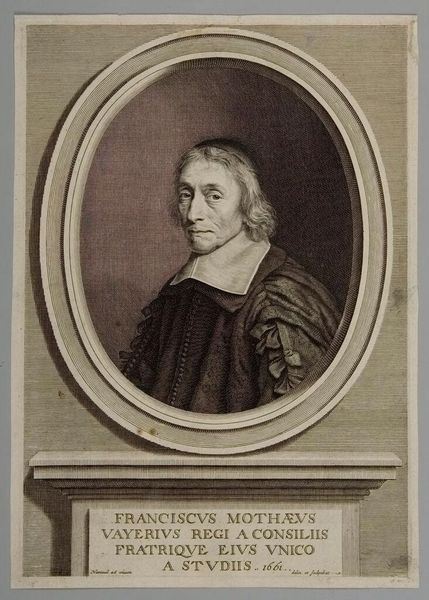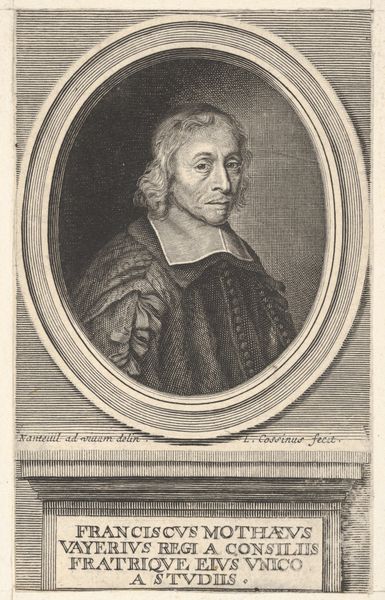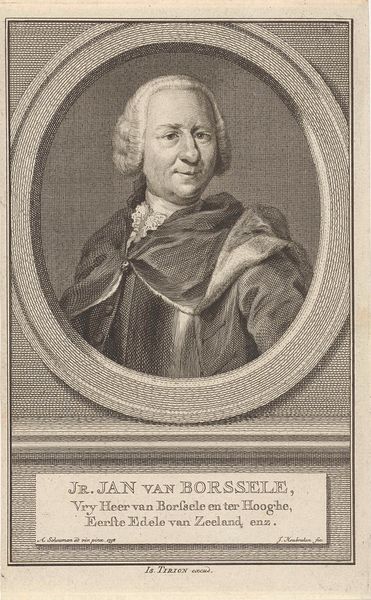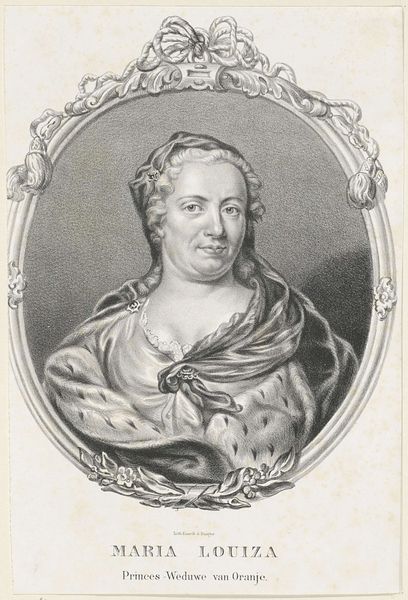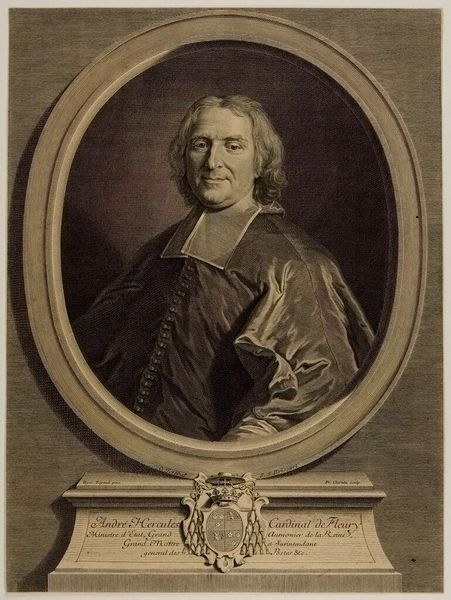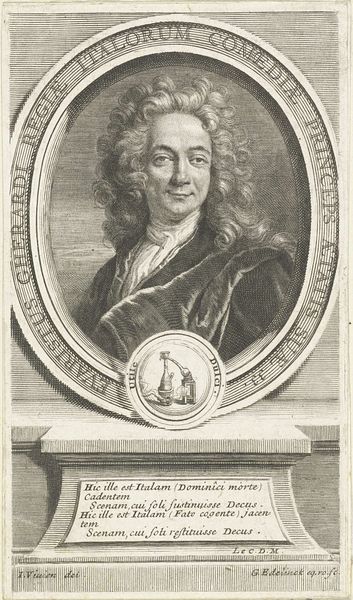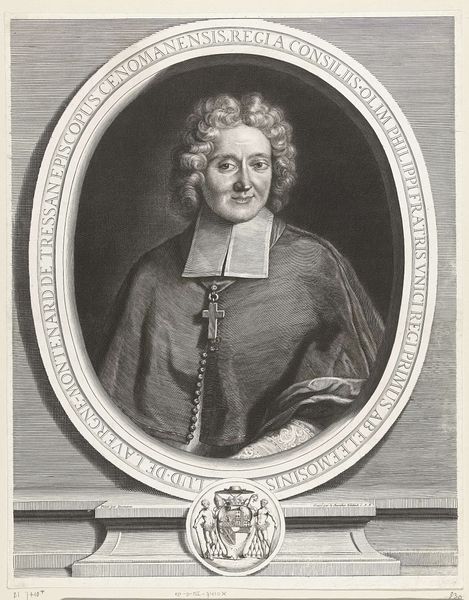
engraving
#
historical design
#
aged paper
#
baroque
#
old engraving style
#
form
#
historical photography
#
line
#
history-painting
#
engraving
Dimensions: height 137 mm, width 80 mm
Copyright: Rijks Museum: Open Domain
Curator: This is Matthijs Pool’s "Portret van André-Hercule, kardinaal de Fleury," an engraving dating from sometime between 1696 and 1727. Editor: It has a certain…gravitas. The formal oval frame, the stark contrast, and the cardinal’s steady gaze—it projects authority. Almost a timeless quality about it, even though you can sense its age in the very material. Curator: Exactly! The print medium itself contributes to its historical significance. Engravings like this were crucial for disseminating images of power and influence during the Baroque period. Think of the role this portrait might have played in shaping Fleury's image across Europe. Editor: The iconography is quite telling. The fur-trimmed robe speaks volumes about his status, naturally, but look at the almost dismissive, simple clerical collar showing through the richer attire; the artist cleverly includes the basic religious duty inherent in his higher role, as if a humble calling perseveres even as earthly powers swell. Curator: Absolutely. Fleury was, of course, a prominent figure in French politics, serving as chief minister to Louis XV. The portrait isn’t just about Fleury as an individual, but about the Church’s role in the European state. Consider also that the Baroque as an aesthetic movement promoted powerful leaders. Editor: I agree. Even the act of engraving contributes. Think about it: Lines etched with precision, almost like the calculated policies and pronouncements of the cardinal. It elevates this artwork beyond just being a simple portrait of an individual into the more universal. The engraver becomes part of his message. Curator: Right, printmaking enabled wider access to images of powerful individuals. Engravings circulated and played a crucial part in shaping public perceptions of important people like Cardinal de Fleury. Editor: I find myself thinking about how this image would function then. More than simply seeing a portrait, it almost became the symbolic reminder of governance—the visual embodiment of religious power itself. It brings distant authority near to you. Curator: Indeed. Examining this engraving offers insight into how power was projected and consumed during this period in Europe's historical trajectory. Editor: A potent intersection of art and the theatre of statecraft. Thank you, it makes you consider the subtle ways images shape perceptions.
Comments
No comments
Be the first to comment and join the conversation on the ultimate creative platform.
